“BLACK
AND
WHITE”
ANNOUNCING THE WINNERS
We’re delighted to present the results of our November competition judged by minimalist fine art photographer Marcin Ryczek.
Color photography may dominate in today’s world, but there remains a special place for black and white. Purity, simplicity, profundity… It is said that constraints fuel creativity, and stripping away color can bring focus to contrast, texture, shape and form. The best black and white photography allows us to see more sharply and feel more deeply.
This month we wanted to see images made magical through the use of black and white. And the resulting selection, covering diverse ground from street scenes to studio portraits via landscapes, underwater photography and AI-collaborations, does just that. It was not a challenging selection to make – so much so that Marcin decided to award two “special mentions” amongst his selection, and in addition to his 1st and 2nd prize. The standard, as he put it, was exceptional, and it’s a pleasure to see what made him tick. Black and white images may be devoid of color, but here we see that they are full of energy, emotion and life!
Congratulations to the selected photographers, and thank you to everyone who submitted. You can join the discussion on Facebook and Instagram.
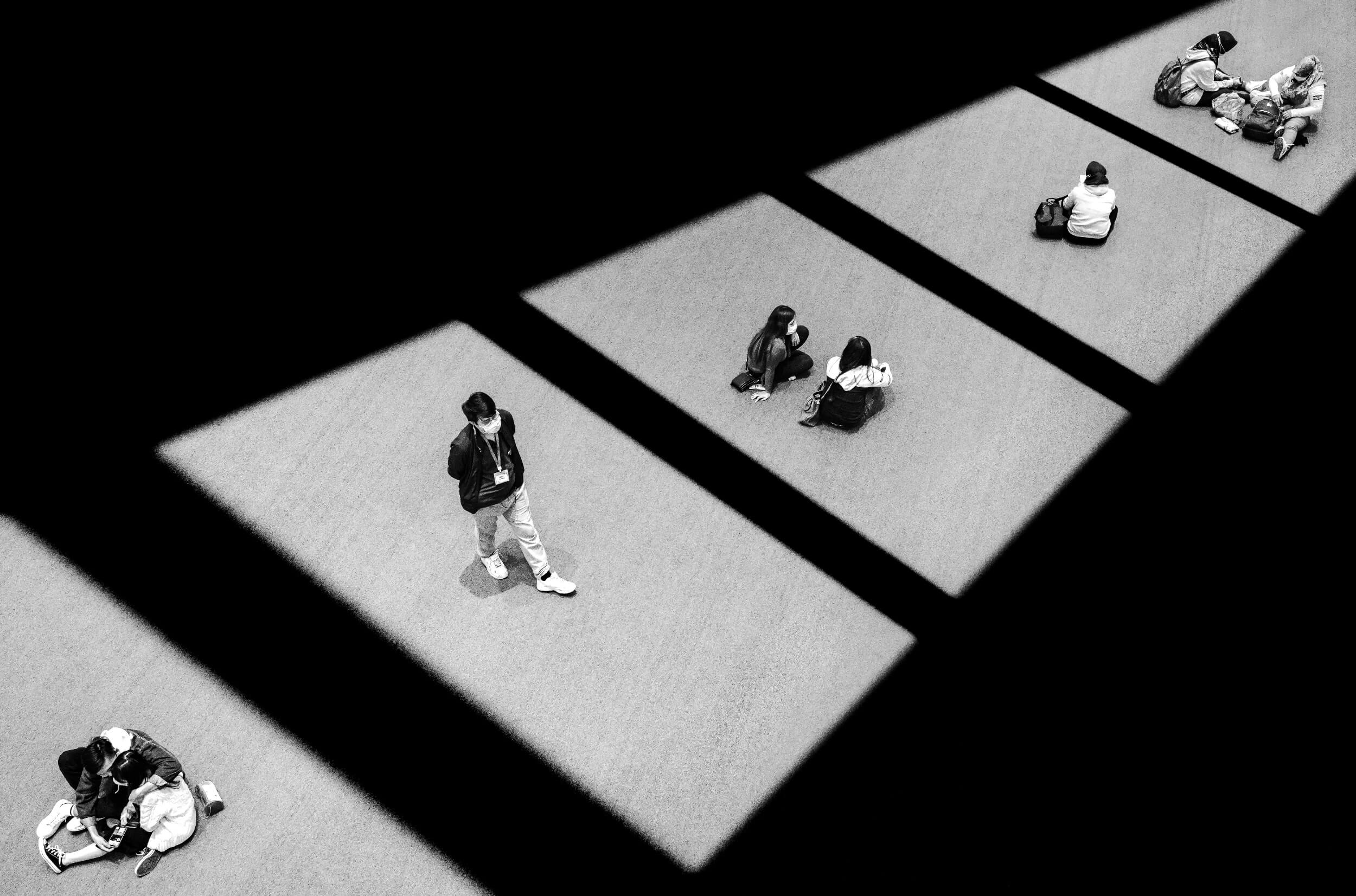
JASON AU


“This photograph has a very interesting graphical, minimalistic character. Geometric figures raised as a result of the light falling from above create separate worlds for me, different stories of the people in them. The photo is very mathematical, because as well as geometric figures you can see an alternating pattern of people alone and in pairs. A compositionally successful photo, as well as a perfectly captured situation.” – MARCIN RYCZEK
Photographer statement – Hong Kong Lines and Patterns is a black and white photography series that depicts my creative vision of my hometown. It comes with a fine art aesthetic and the compositional approach of isolating urban subjects, geometric elements and forms from the chaotic urban environment of Hong Kong. This series portrays the way of life of different urban characters in the context of their surrounding geometric environment, which were all culled from mundane everyday scenes, with fleeting moments seized from near and distant.
Nevertheless, those subjects look trapped and lost inside an artificial geometric labyrinth without realising it. The sense of confinement in which the urban structure crashes the person, enclosing them into small boxes with no way out, is suggestive of the modern condition of how we succumb to the glory of the urban landscape, which is also a product of our creation. Perhaps this is a metaphorical view of urbanity while also implying the melancholic romance of hectic modern city life in a metropolis like Hong Kong.
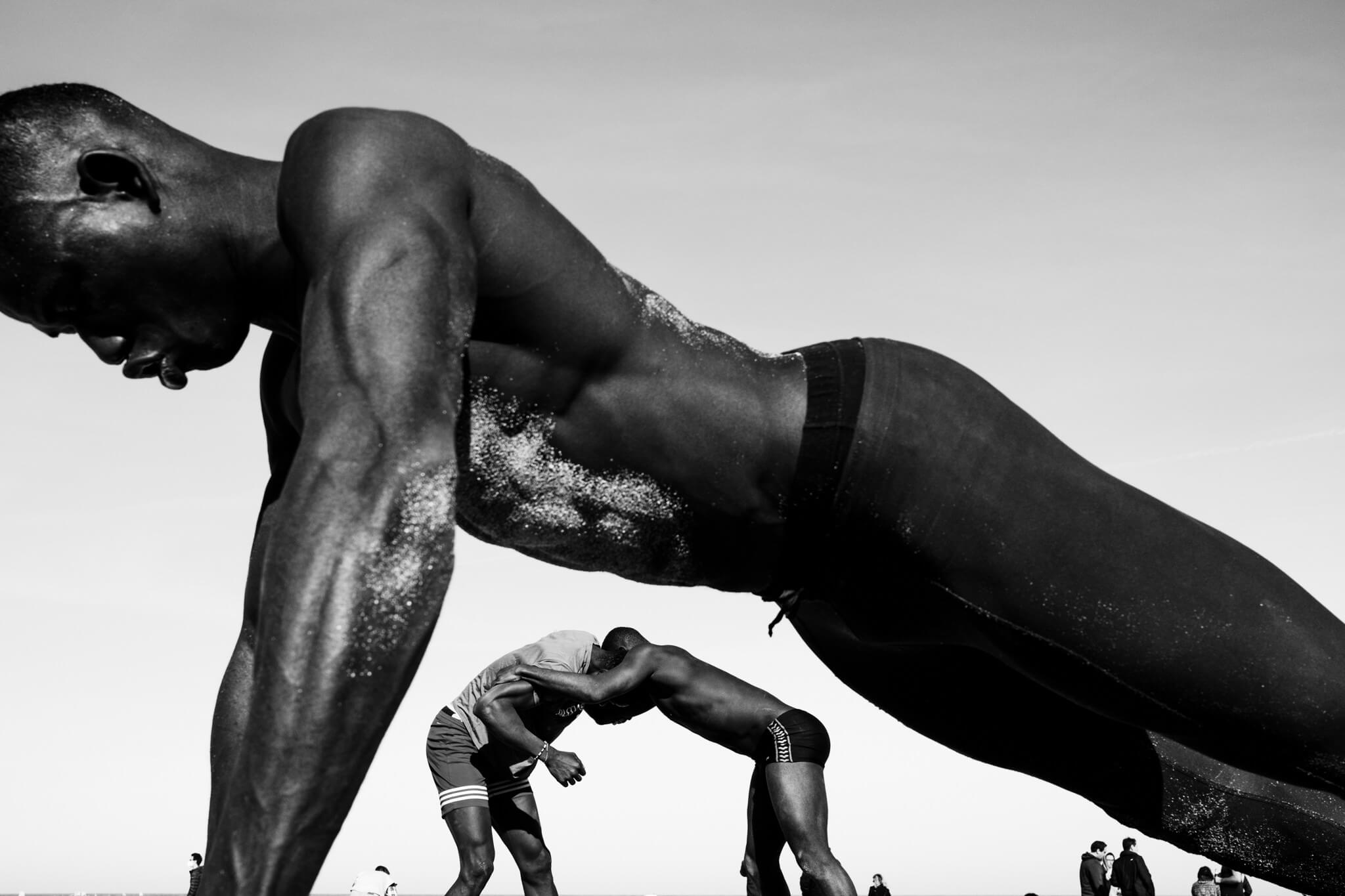
JUAN GALÁN


“A very successful street photo showing the cult of strength. The muscular body of the man in the foreground creates a kind of “frame” for the situation in the background. An interesting shot and perspective.” – MARCIN RYCZEK
Photographer statement – From the series Once Upon A Time in Puglia. One might say that the Italians keep Puglia a secret because of its authenticity. Here you will find that its inhabitants speak their native dialect, have deeply rooted values, operate traditional businesses far from the digital era, rely on religion as vital support, and take pride in their cuisine. The region ranges from the countryside to the sea, from the sandy beaches of the Ionian Sea to the rugged coast of the Adriatic.
Puglians pride themselves on their deeply-rooted “cucina povera” (poor cuisine) tradition. This food is simple and delicious, relying on fresh and local produce such as durum wheat, tomatoes, artichokes, fava beans, rocket, courgettes, beans, fennel, peppers, onions, beef, and lamb. A long coastline and fishing tradition bring large quantities of seafood to the table where the octopus is enjoyed raw and fresh fish is served without dressing.
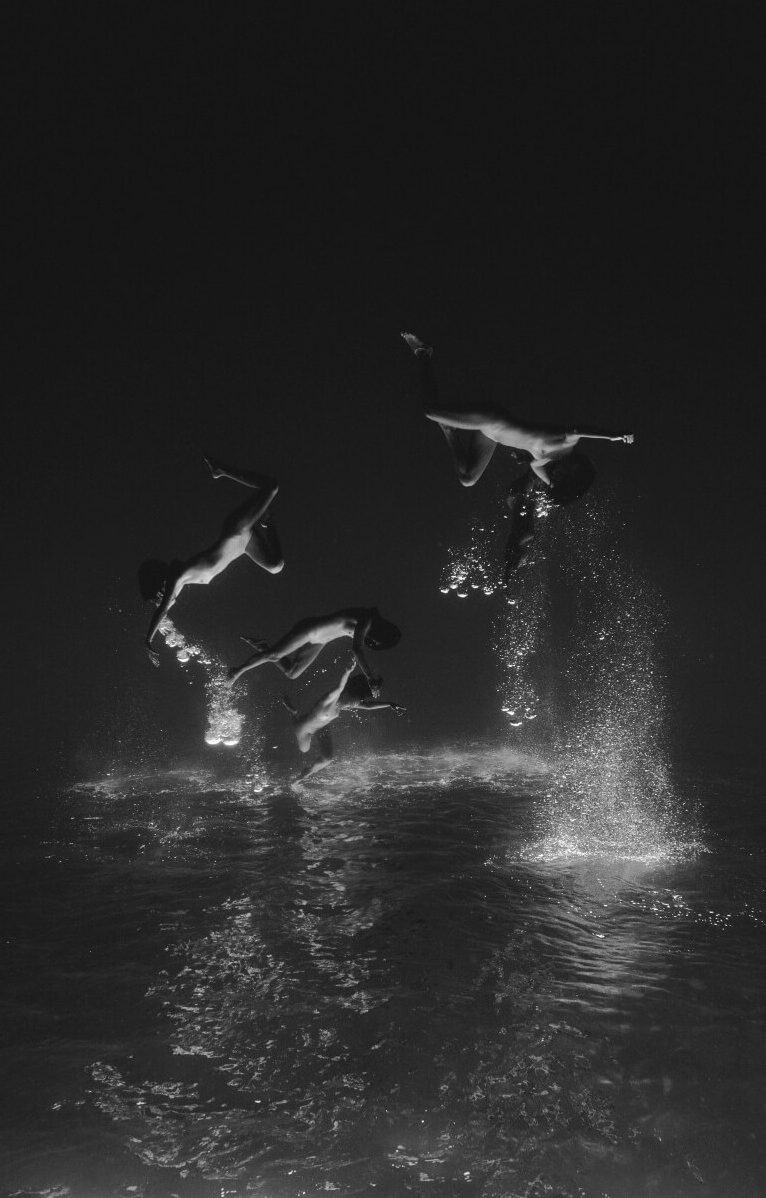
CAMILLE ROBIOU DU PONT


“There is something mystical about this photo. You can feel the symbiosis of people with nature, of which we are a part. The brightness on the surface of the water is for me a metaphor of a transition to or from another world, for which naked bodies floating in the water unknowingly strive.” – MARCIN RYCZEK
Photographer statement – From the series The Song of the Silver Lagoon. Underwater photography fascinates me, and allows me to play between the dualities of real and imaginary. I liken it to being cut off from the world, where I can create the otherworldly, dreamlike images. I believe the essence of the divine feminine lies in deep connection with Mother Nature.
I wanted to reconnect with the roots of nature and the ocean, by featuring the female body in nature, showcasing how it can awaken our senses: smell, sight, and touch. I see no separation between the woman I am photographing and her surroundings – they are one, as the woman lives inside nature.
This series is an invitation for women to take a deep dive into the most vibrant, emotive, sense of themselves, between light and shadow, to reconnect with their feminine, unapologetically fierce, ever-changing, natures. Through a flow-state of authenticity, other dimensions are unlocked, and it is through embracing this abyss of continual change, evolution and self acceptance that we find luminous freedom.
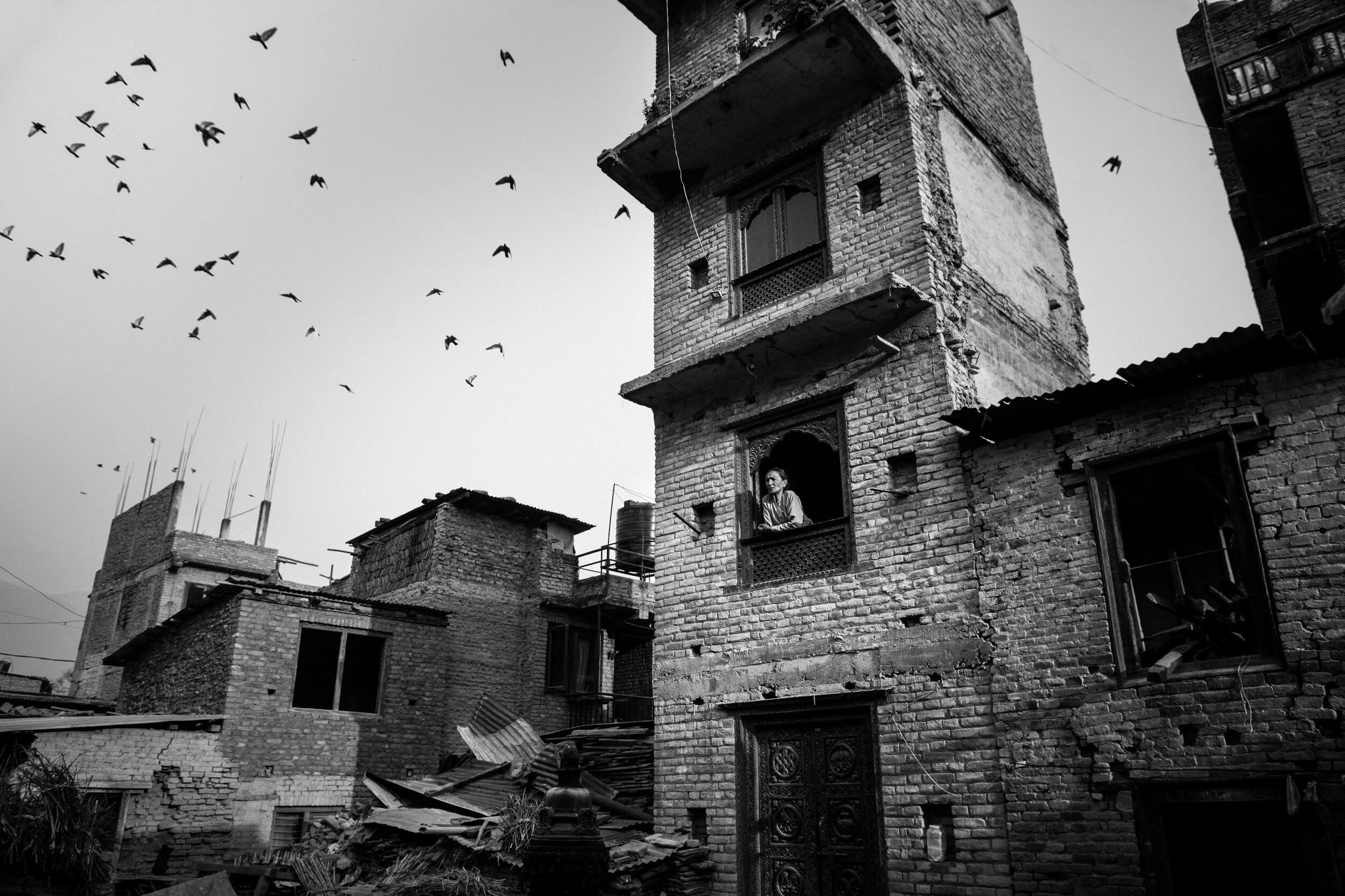
GONZALO BOTET


“A moving image showing a lonely woman among ruined buildings as a result of the earthquake in Nepal. A place that everyone has left, from which even the birds fly away.” – MARCIN RYCZEK
Photographer statement – Resilience. After the earthquake in Nepal, this woman maintains the desire to live in her home despite the destruction and deaths in her community.
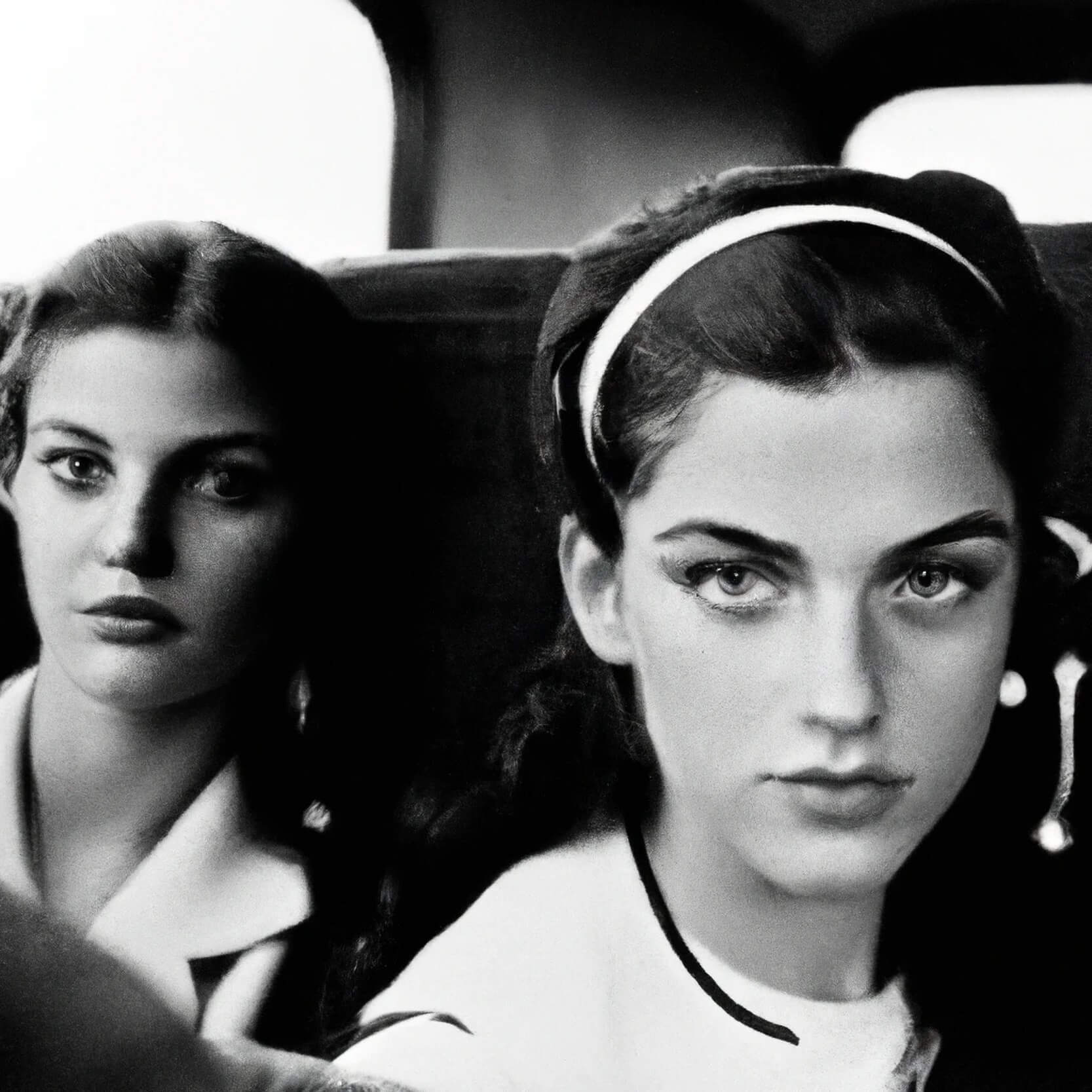
A. I. SAVAGE
“Here the photographer combines analog photography and the latest AI image-making technology to arresting effect. They don’t tell us exactly how they go about it – and we’d love to know more about the process involved – but the resulting image has an uncanny quality. Beautiful on the surface, but with something subtly off – little glitches in the subjects’ eyes perhaps – it’s an apt descriptor of the power of today’s AI: unparalleled mimicry but still without the soul. The implications of such technology though, might be profound.” – LIFE FRAMER
Photographer statement – Mexico City, 1934. I time travel with a vintage Leica and Dall-E to make historically accurate photographs. All the submitted images are original work created in collaboration with the deep learning model Dall-E.
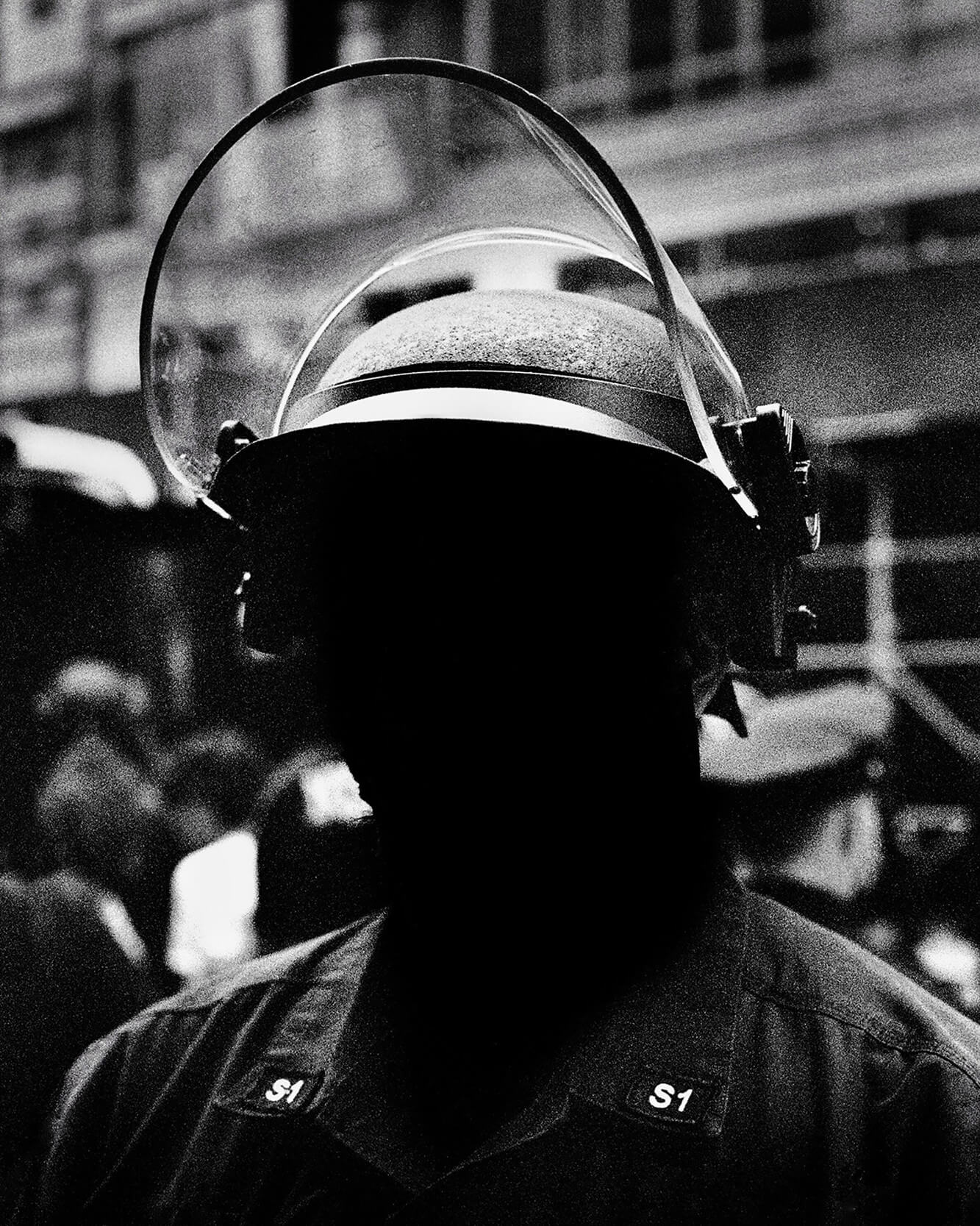
ANDREW HALLINAN
“Turning “the eye of surveillance back on the state” as Andrew puts it in his statement, there is something of the zeitgeist in this image – a re-examination of our law enforcement systems, and their role in protecting our civil society. Presenting a literal facelessness in his subject, the result is impersonal and intimidating – the black abyss where a face should be inviting us to reflect on the notion of policing and the continued acts of brutality and bias that incite protest. A provocative image that is striking in its simplicity.” – LIFE FRAMER
Photographer statement – I photograph underground music and protests in New York City. By photographing “cops, not comrades”, my series “1312” turns the eye of surveillance back on the state.
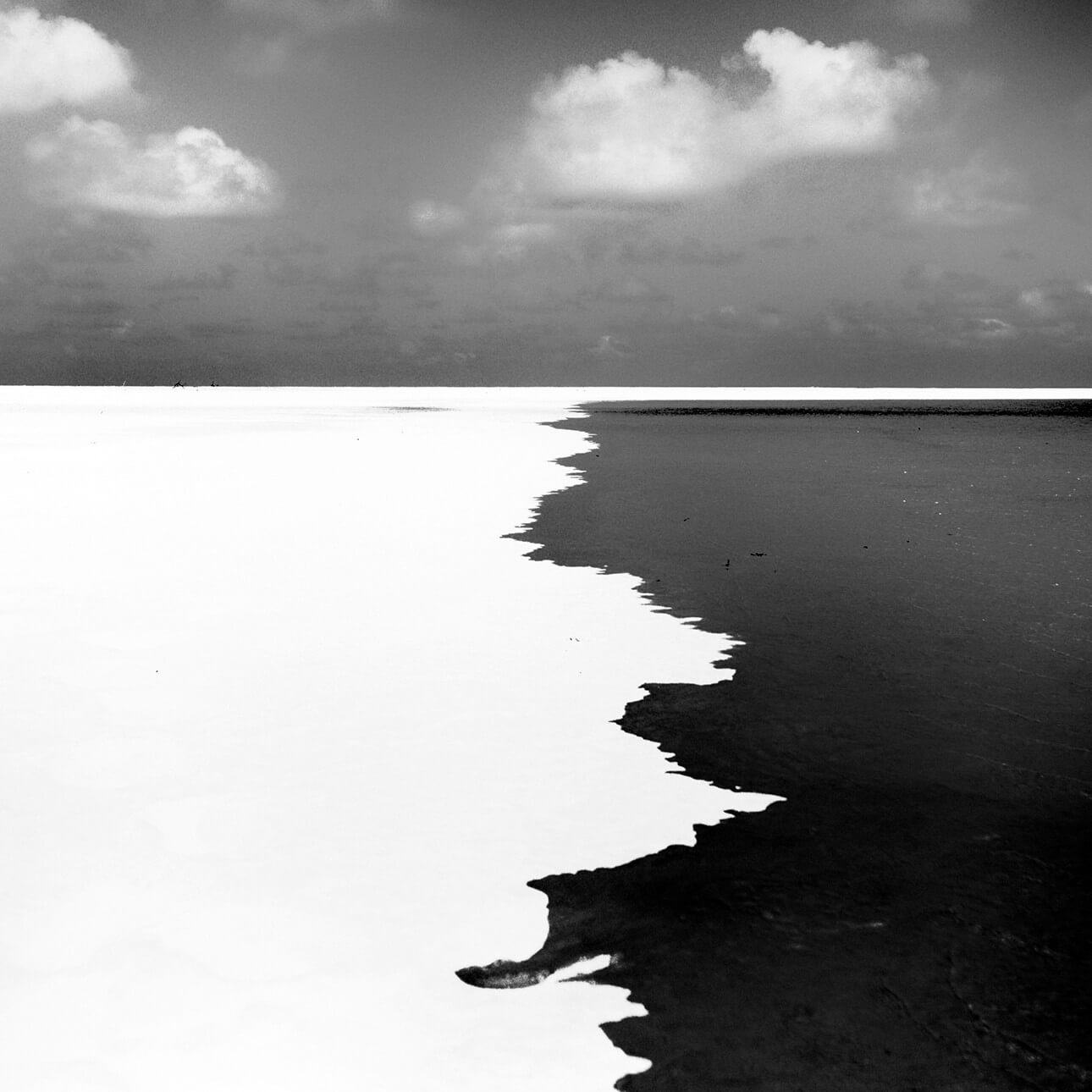
JAMES CONWAY
“Like a fissure through the center of his frame, James’ square format image shows the equal and opposite forces of land meeting sea in an undisclosed part of the world. Light and dark, positive and negative, the landscape is in perfect visual balance, creating something satisfying in its peaceful, empty equilibrium.” – LIFE FRAMER
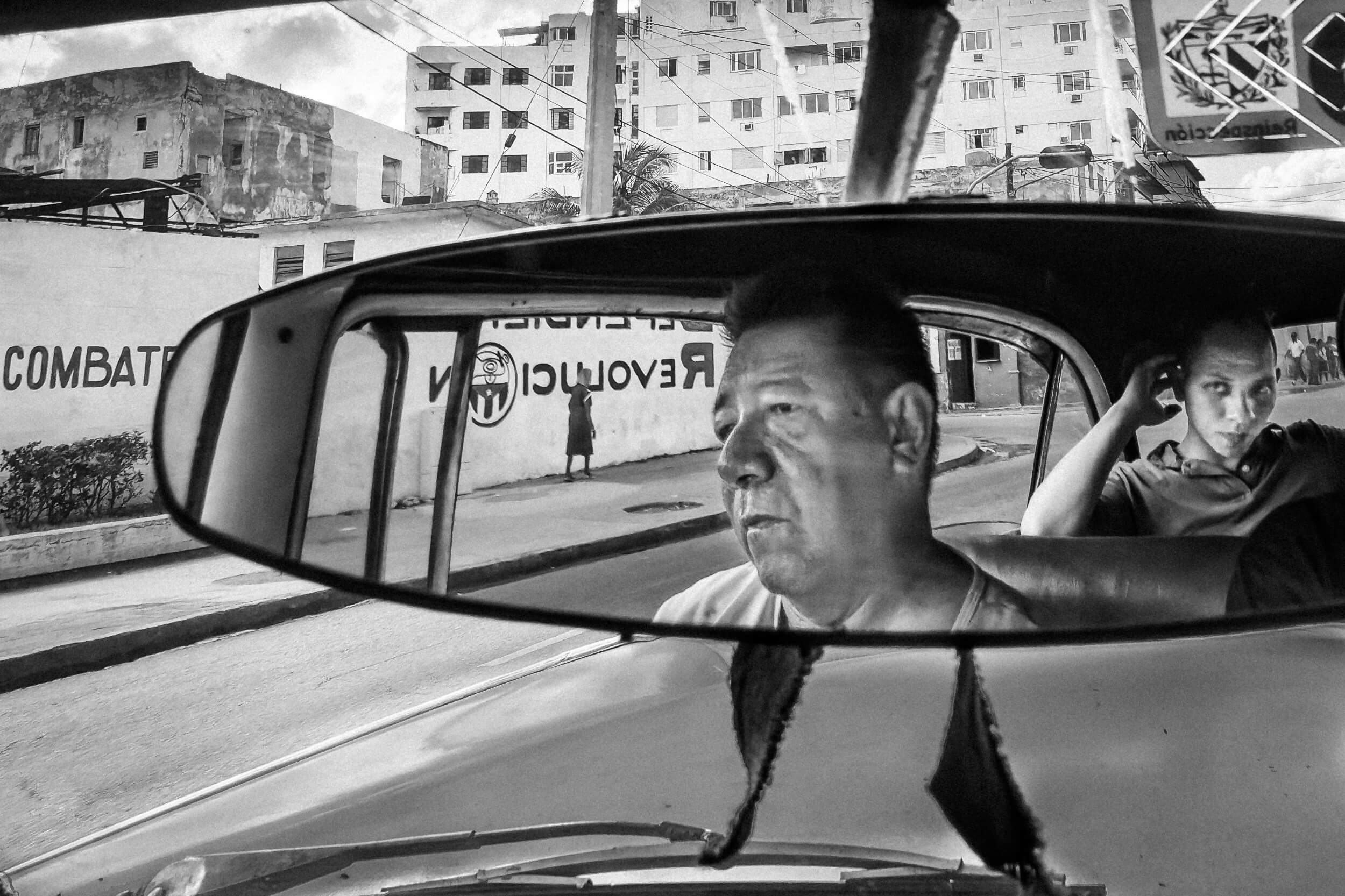
ANDREAS BAUER
“Using the rear-view mirror as a frame within the frame, Andreas’ image shot on the move in Habana provides an immersive slice of Cuban life: capturing the feelings of travel, the normalcy of daily life, and the all-pervading historical context of the island, writ here large on the city walls.” – LIFE FRAMER
Photographer statement – Traveling by car in the streets of Havana – watching the Revolution in the rear view mirror.
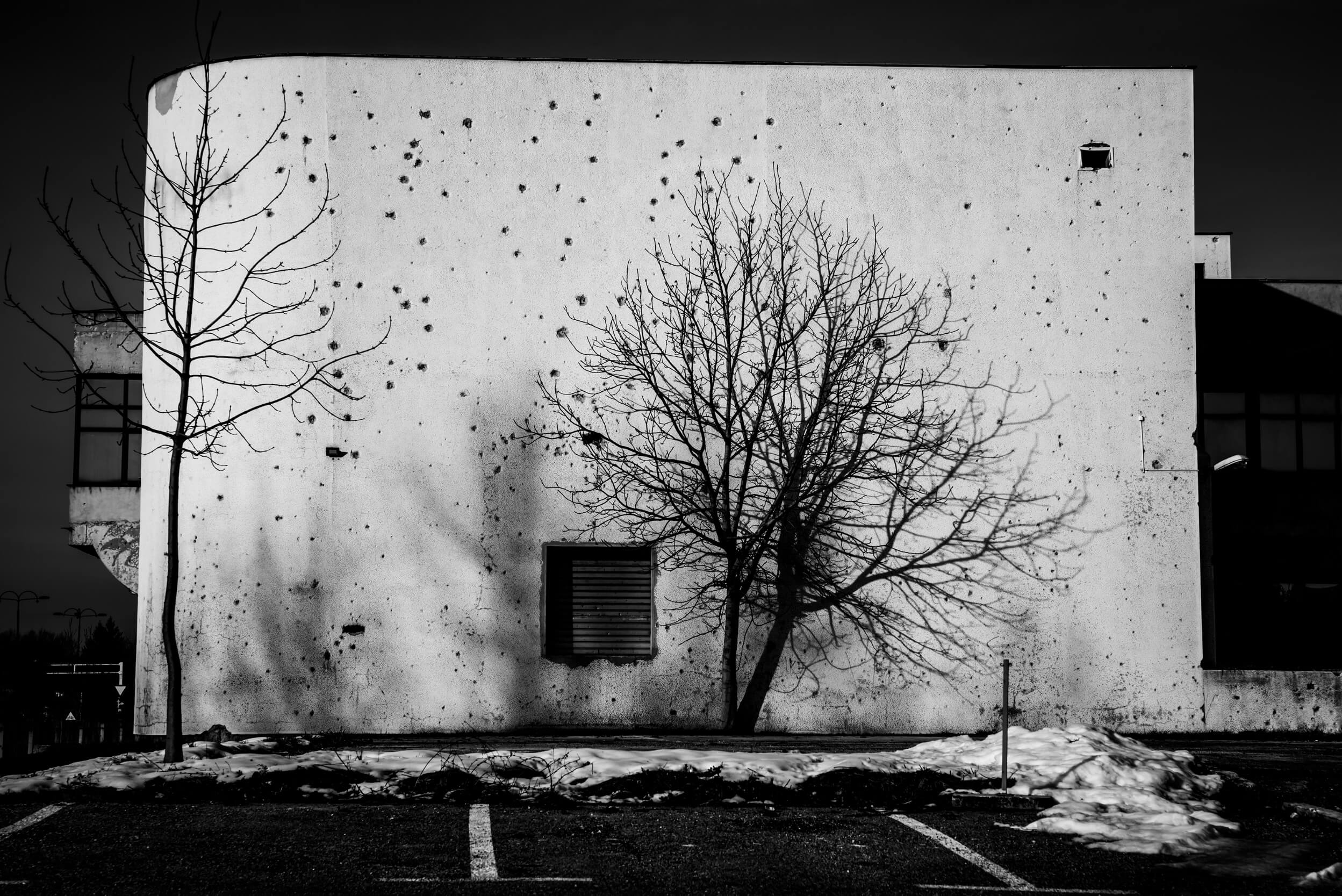
LARISA BAJEC
“Like a studio portrait backdrop, this white building presents a canvas in front of which the tree has its photoshoot, standing firm despite the onslaught of urbanism and destruction around it. With snow on the ground, the bullet holes that pepper its façade could almost be mistaken for falling snowflakes – instead acting as a frozen reminder of our folly. It’s a quiet still-life that speaks to the tragedies of war that linger long after the fighting has ceased.” – LIFE FRAMER
Photographer statement – How to kill a tree, Sarajevo, Bosnia and Herzegovina.
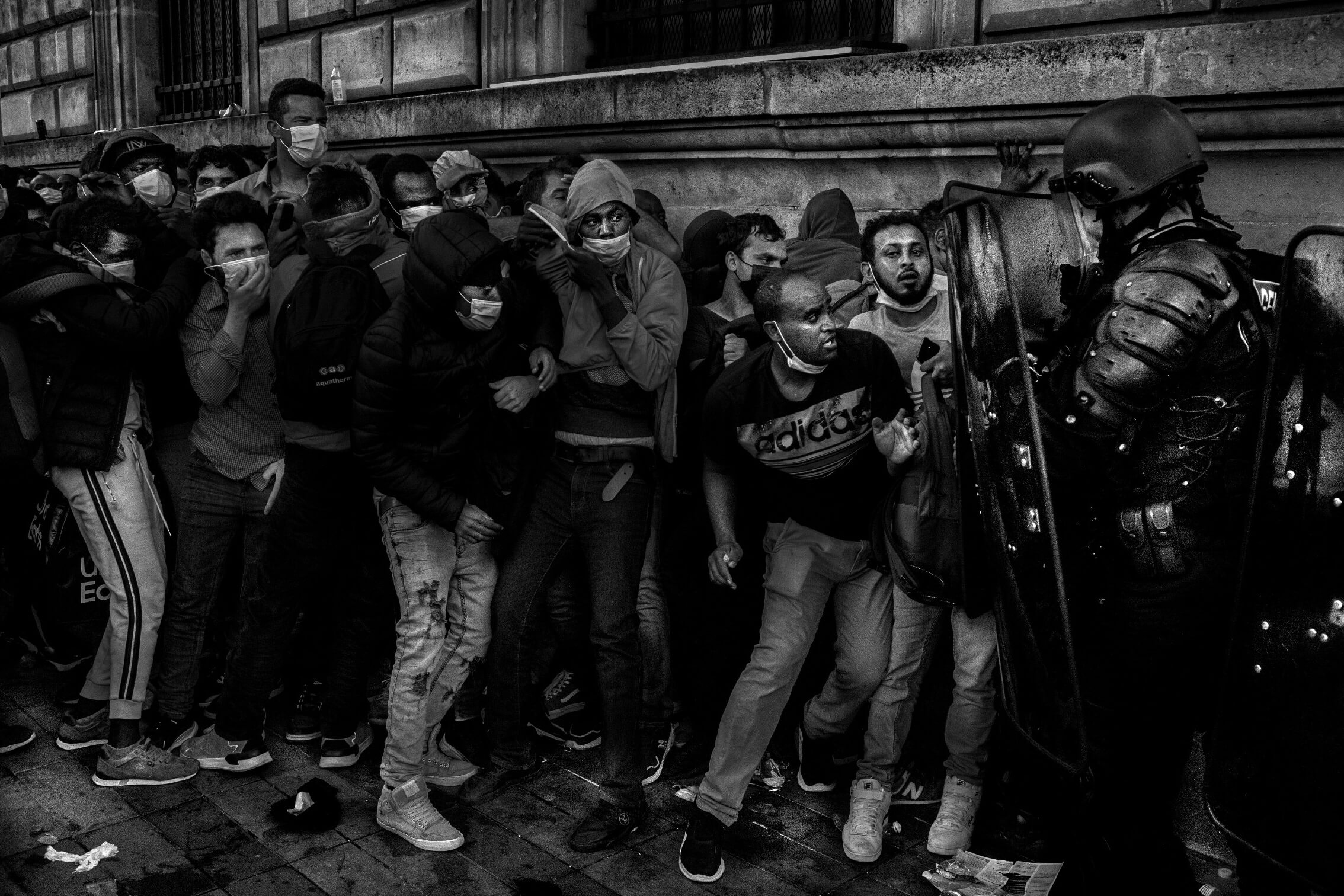
JULIEN GIDION
“Like a contemporary take on the frieze, this image – filled with tension on the expressions of the young men that inhabit it – speaks to our times: the desperate, mass movement of asylum seekers around the world. Amongst the headlines and statistics, it’s easy to forget the human side of it all: in individuals in search of nothing more than a safer, better life, and only chance dictating whether we live on one side of the barricade or the other.” – LIFE FRAMER
Photographer statement – Paris, May 2021, Queuing asylum seekers.
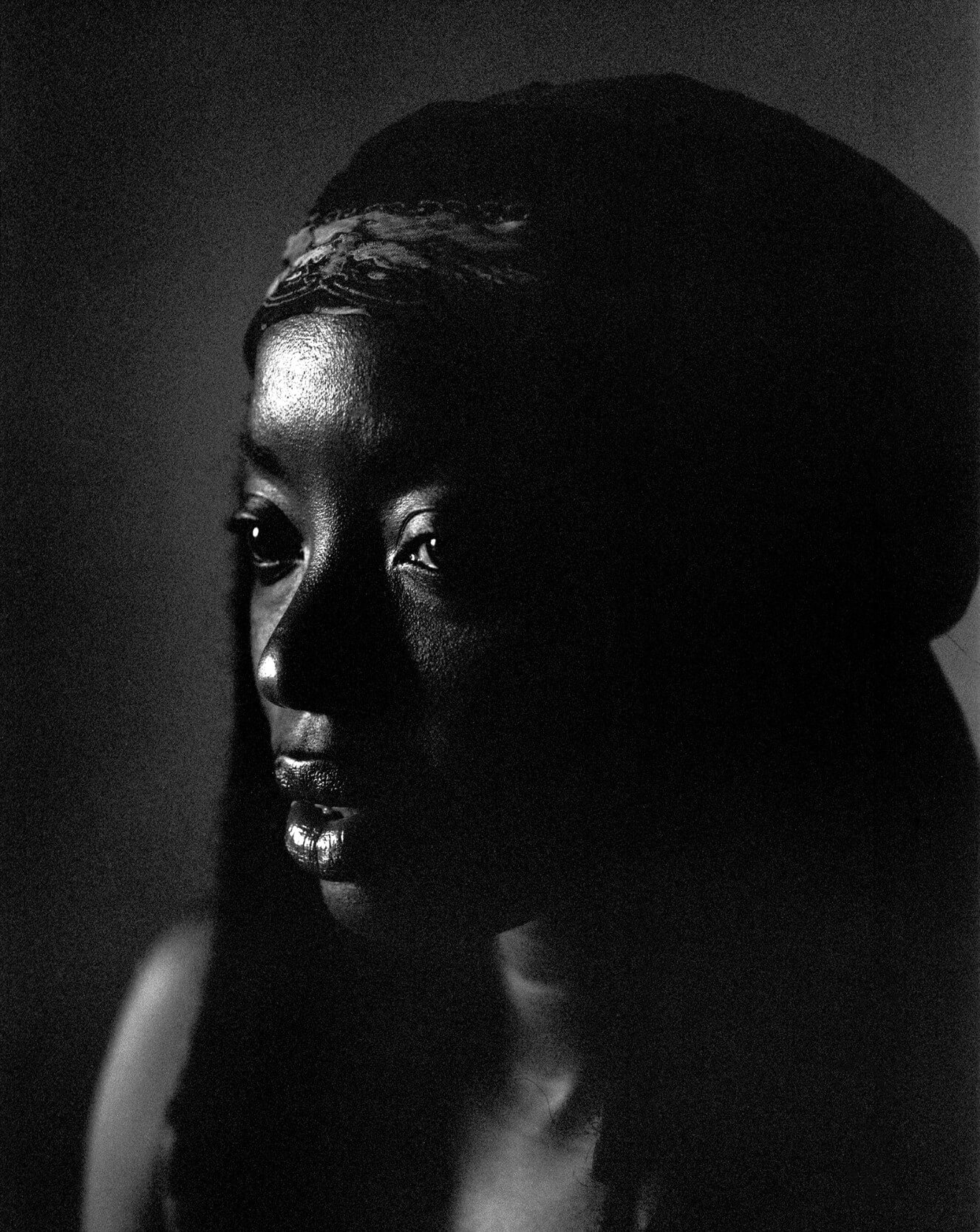
KELLY-ANN BOBB
“With beautiful tones and textures, Kelly creates a stunning portrait of her sister, the use of black and white stripping it back to its essentials. It’s a wonderful example of the continued power of analog photography and darkroom techniques – to create images that are tactile and textural, that can be felt as much as viewed.” – LIFE FRAMER
Photographer statement – A portrait of my sister taken with portra 400 film. When I scanned this negative I was quite surprised by the metallic blacks of the images. I guess it was a result of the lighting, the film stock and developing in Rodinal. This is the reason I like analog photography. It’s always a journey in discovery.
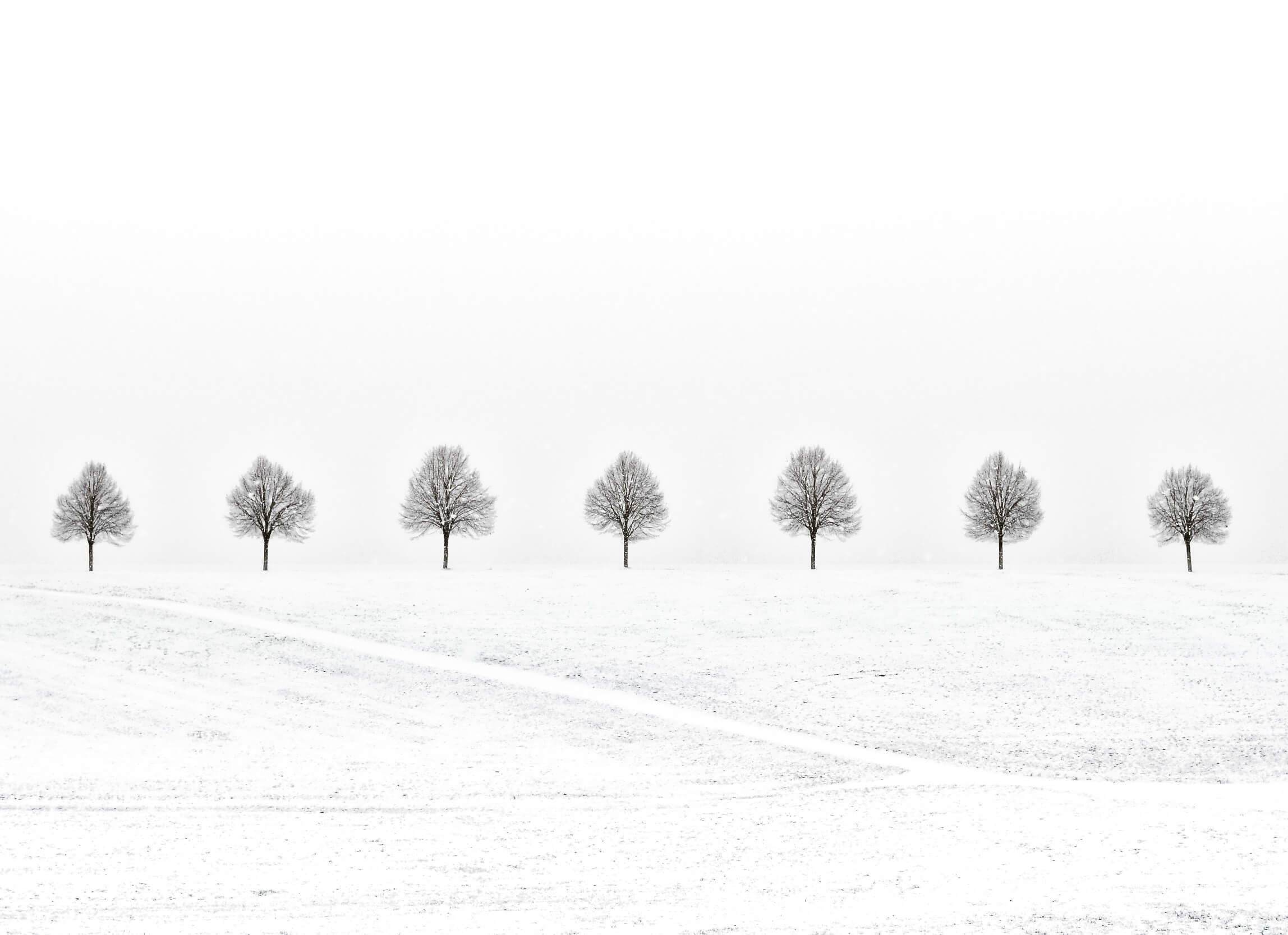
LISA M
“This is not a complicated image, but that’s where its power lies in both its subject matter and execution – a pure and artistic depiction of this treeline in the snow, a simple pattern contrasted against the sparse white backdrop. Lisa’s simple photographic language makes for an image that has a calming, serene aesthetic.” – LIFE FRAMER
Photographer statement – Tree Line.
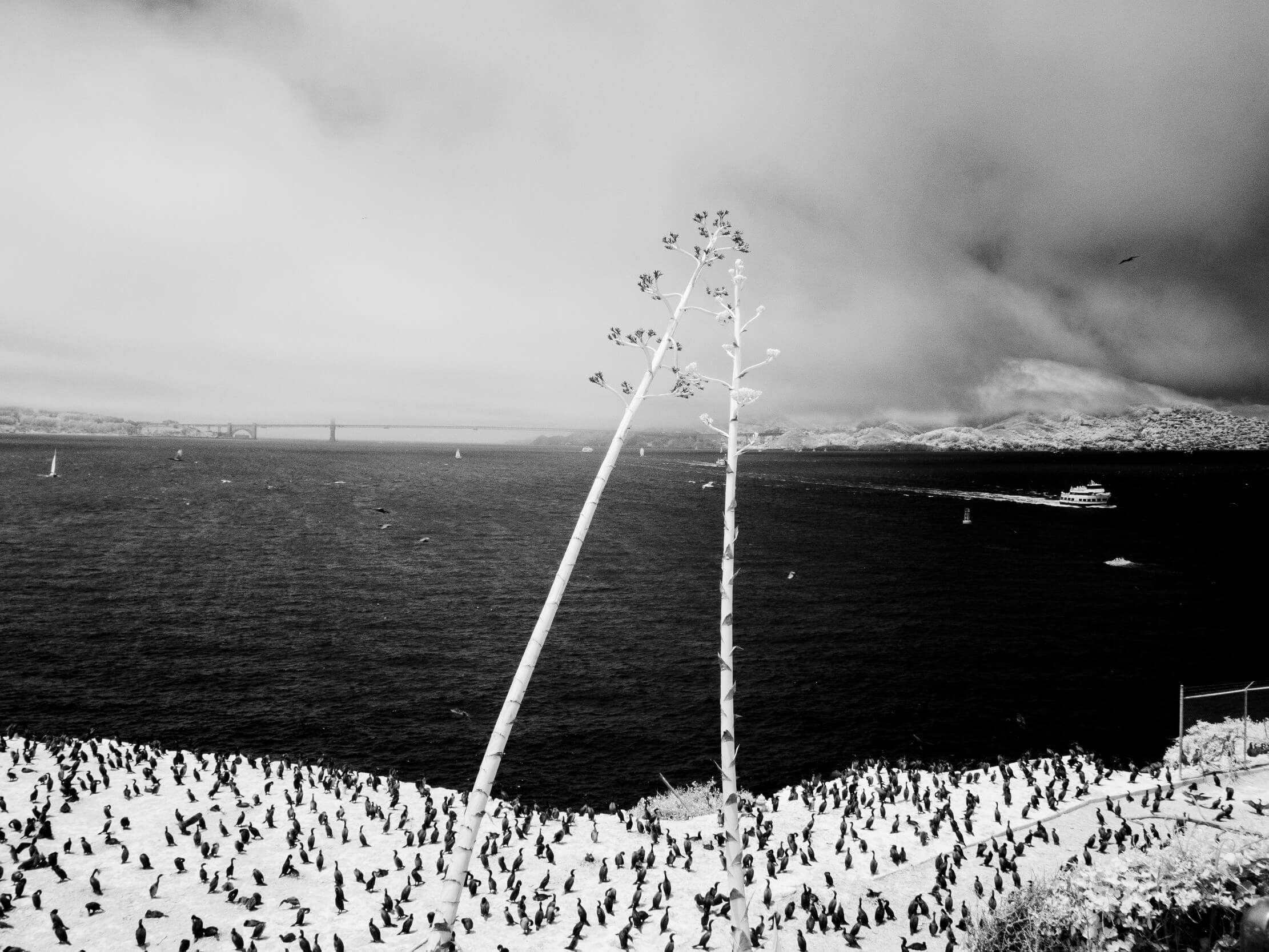
HIPP ASTIER
“There are several layers to enjoy in this scene of San Francisco Bay shot from Alcatraz – from the birds in the foreground to the boats in the water and the Golden Gate Bridge draped in low mist in the distance. Everything is brought together through high-contrast infrared (we assume) black and white, and the strange geometry of these leaning trees cutting through the center of the frame. These elements act to give the scene a peculiar, dynamic quality, elevating it in interest from that of a standard landscape image.” – LIFE FRAMER
Photographer statement – Alcatraz Birds.
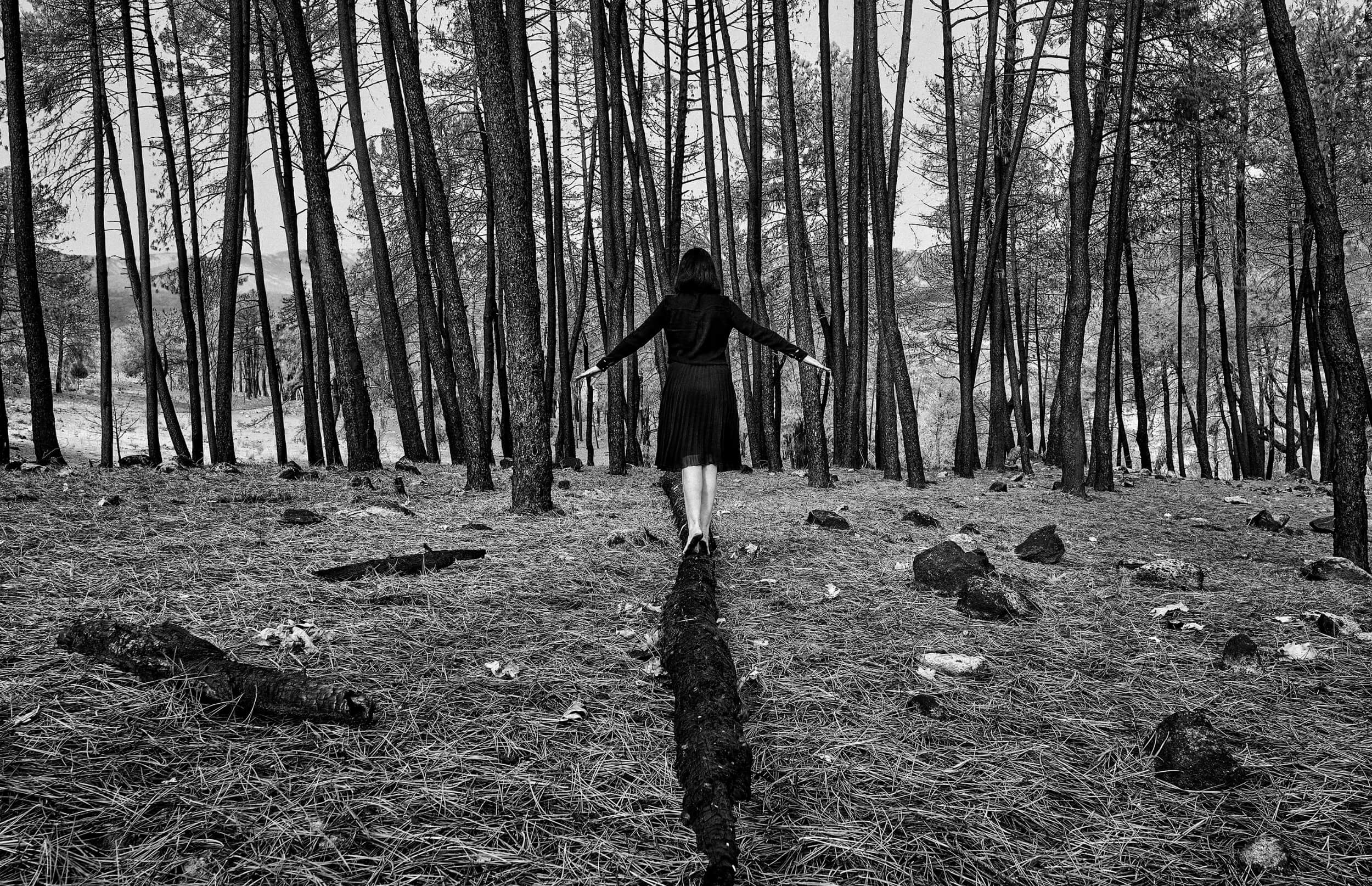
XIMENA BARES


“Ximena’s statement stops you in your tracks – a near-unspeakable experience laid out in stark and honest text. It’s with this in mind that her image takes on its meaning: a scene that could easily be misconstrued as whimsical were it not for the somber black and white treatment, instead speaks to the precariousness of life – tiptoeing onwards until one can balance no more. Dressed in black and moving barefoot towards the treeline, there’s nothing accidental about the composition. It’s a poignant shot and a powerful example of photography as a tool both to process one’s own feelings and to connect with others, even in the saddest of circumstances.” – LIFE FRAMER
Photographer statement – From the series The Last Day in the Life of Nora Bares. Nora and I were born seven minutes apart. How to describe in a few words my relationship with her without falling into cliché? Complicated. I’ll just say one thing that I hope will accurately sum up our universe: we were everything – absolutely everything – to each other. Nora and I were physically the same except for two details: our navels and our fingerprints. Paradoxically, our characters were opposites.
Over the years, I have read a lot about the supposed telepathy between twin siblings, and now that Nora is no longer with us, it seems even more extraordinary. I have come to understand that this fragile, invisible thread is maintained beyond the confines of this world.
When she first mentioned the idea of taking her own life, I was very angry. No matter how much she argued that there was no drama in her decision, that she was not depressed, that she had the right to decide when to leave and that she felt her time had come, for me it was the beginning of an ordeal full of fear and anguish. I will not dwell on my efforts to get the idea out of her head, nor her efforts to get it into mine. In the end she won the game and set a date for her departure.
This series was taken on the last day I spent with Nora. We got up just before dawn, drank coffee and smoked in silence in our kitchen. Later we went out to wander around several of our favorite places. Around 7 p.m., Nora hugged me for a long time, then turned and walked off into the woods. I would never see her alive again. I got in the car, got home and climbed into bed.
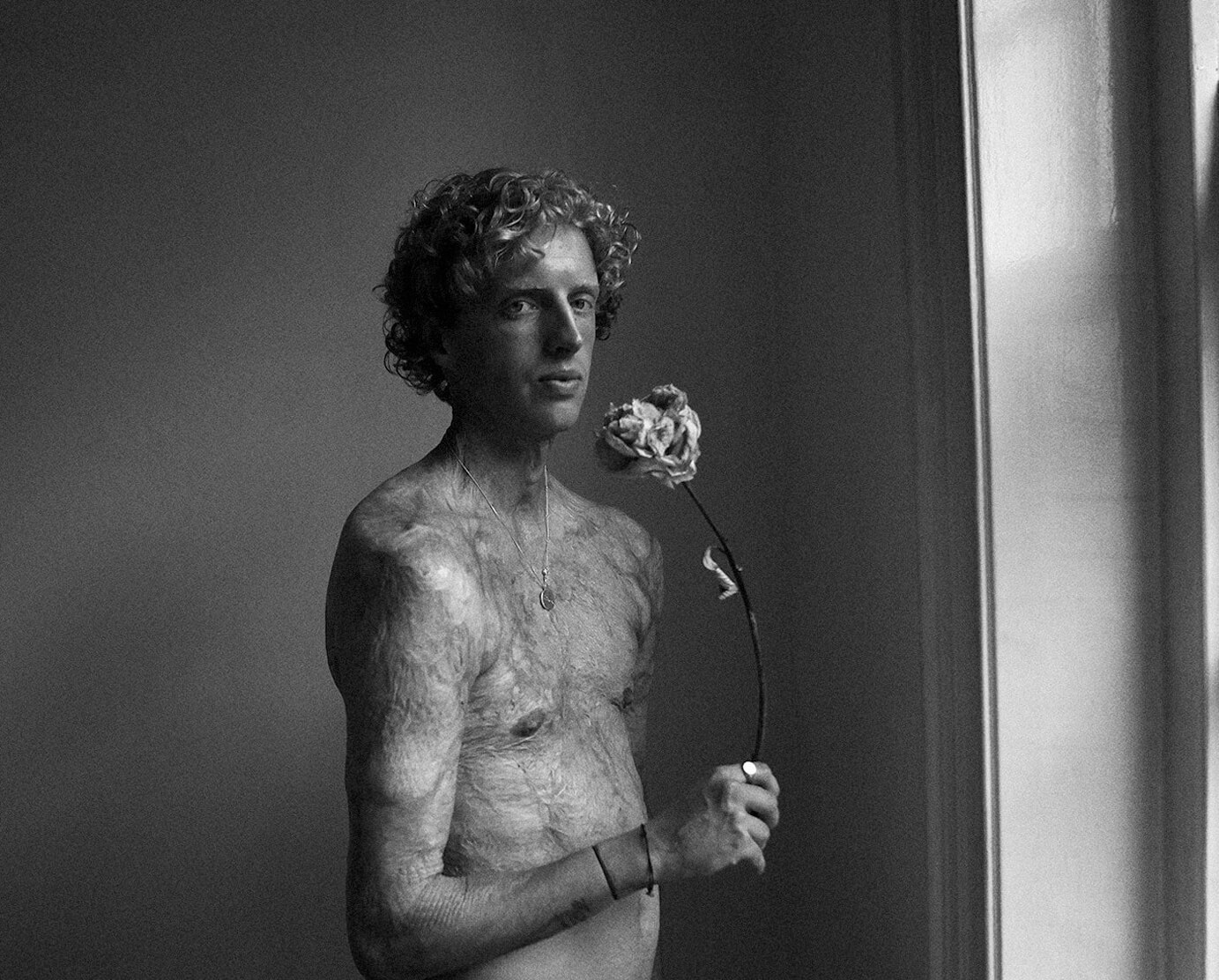
CRAIG BINGHAM


“Making use of symbolism – both the delicate rose in his subject’s hand and the generous use of negative space – Craig presents a devastatingly beautiful portrait, one that speaks to the strength and spirit of his sitter. It’s an image charged with emotion – the type that stays with you for a long time.” – LIFE FRAMER
Photographer statement – Max Bongard, London, 2020. Walking home after his 18th birthday from a night out in Manchester, Max climbed up some hanging ladders onto a parked train. Unbeknownst to Max, the cables above were still live. When he stood atop the train, 25,000 volts of electricity jumped from the cables to his body setting him alight instantly. Max woke up one month later in hospital after having surgery and a skin graft. 48.9% of his body was scarred from the accident. This is the first of a series of portraits taken of Max, where he was photographed for the fist time since the accident, laying bare his scars.
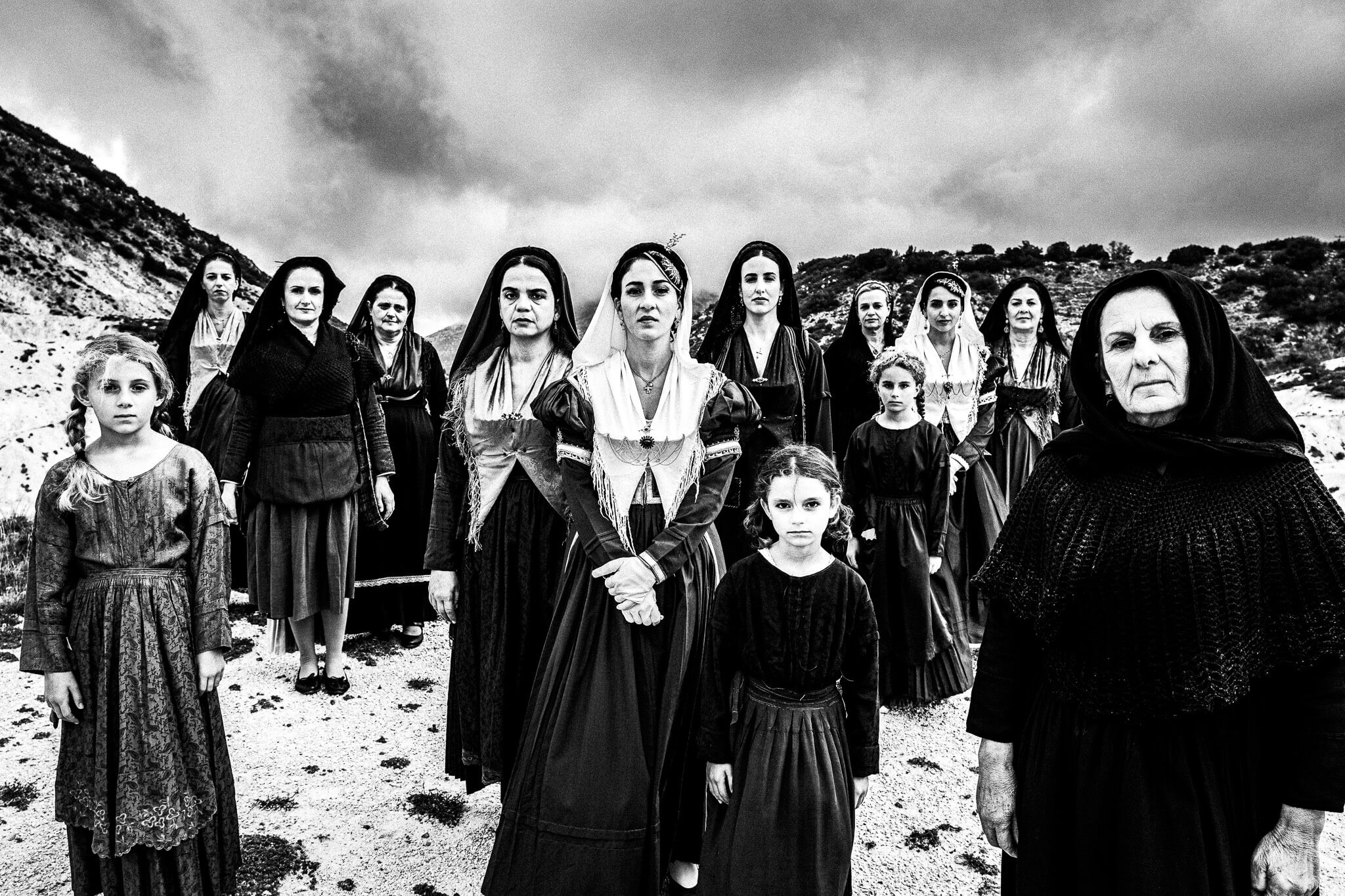
GEORGE TATAKIS


“George presents a brilliantly orchestrated, intergenerational group portrait – rooting these Greek women in both their landscape and their heritage, and in doing so exploring the country’s unique position at the intersection of Eastern and Western culture. It’s a creative approach to a fascinating subject and his distinctive high-contract use of black and white adds to it – grounding the scene in the present while celebrating its past.” – LIFE FRAMER
Photographer statement – From the series Caryatis. Greece. A country where tourists all over the world flock every summer to enjoy their share of sun, sea, fun and maybe a glimpse of antiquity marvels, withstanding the passage of centuries, under the bright light that illuminates the Pentelic marble and provides the Aegean Sea with her characteristic deep blue shades.
Nevertheless, beneath the obvious charms and shallow endeavours, there lies the Greek Culture. A Culture impregnated by the seed of thousands of years of philosophy, wars, and influences from other civilizations. A country that has always strived to understand its place in this world, having its soil soaked by both the sweat and blood of Eastern, as well as Western conquerors and indigenous inhabitants. Many of us believe that we are made of choices. Choosing between one over another and repeating, sculpts the line of our life, but I beg to differ. Alas, calculated choices never got me anywhere, but rather embraced paths unfolding before me, resonant with my feelings.
Maybe this is the answer to Greece’s dilemma. Let go and embrace its place as an acrobat on a string between these two main pillars of civilization. What if its role lies with the fact that Greece should be the transitional link from the Western to the Eastern civilization and vice versa? The above statement is intrinsic to Greece’s customs and traditions, where the values, way of life and practices of people reflect. An unorthodox, vast mixture of Christian and pre-Christian, Dionysian rituals and practises, proves the unity of the human species through diverse manifestations.
This work focuses on traditional female costumes all over Greece. I give attention to every detail in the image, by scouting locations and using a scientific advisor to spot authentic costumes or excellent reproductions. Each photograph is meticulously staged; postures, attitudes, and even hand placements depicted are all typical of the area from which the costume originates.
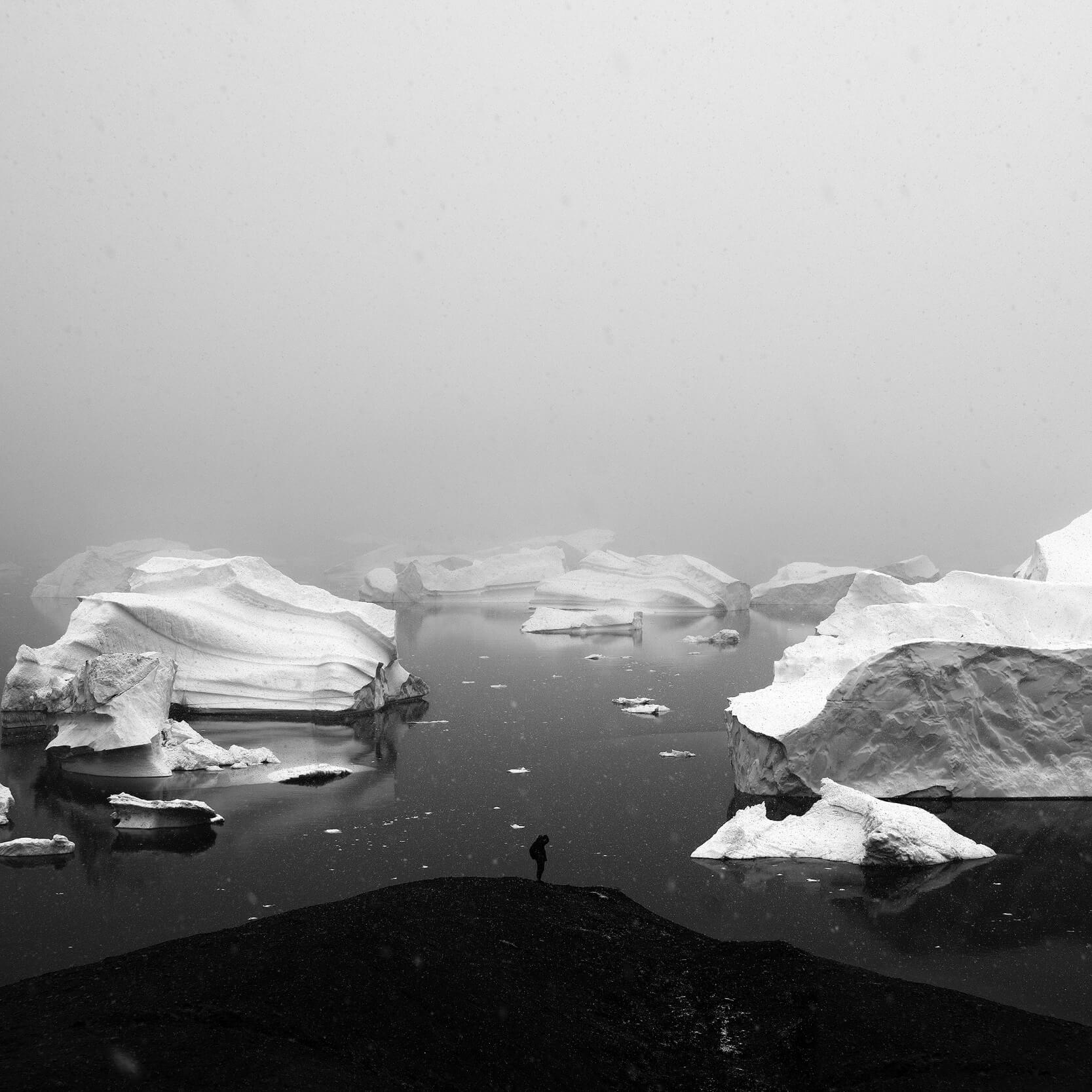
IVAN BALABANOV


“Shot on an expedition to Greenland, Ivan’s remarkable image of a lone traveller in this vast landscape speaks to the immense, unforgiving beauty of the Arctic. Perfectly framed, and with light and shade well balanced, the use of black and white emphasizes the starkness of the scene and the natural textures and forms that fade into a white abyss. What an adventure.” – LIFE FRAMER
Photographer statement – From a photo expedition by sail ship to North-eastern Greenland. I was lucky to be a part of this two-week adventure.
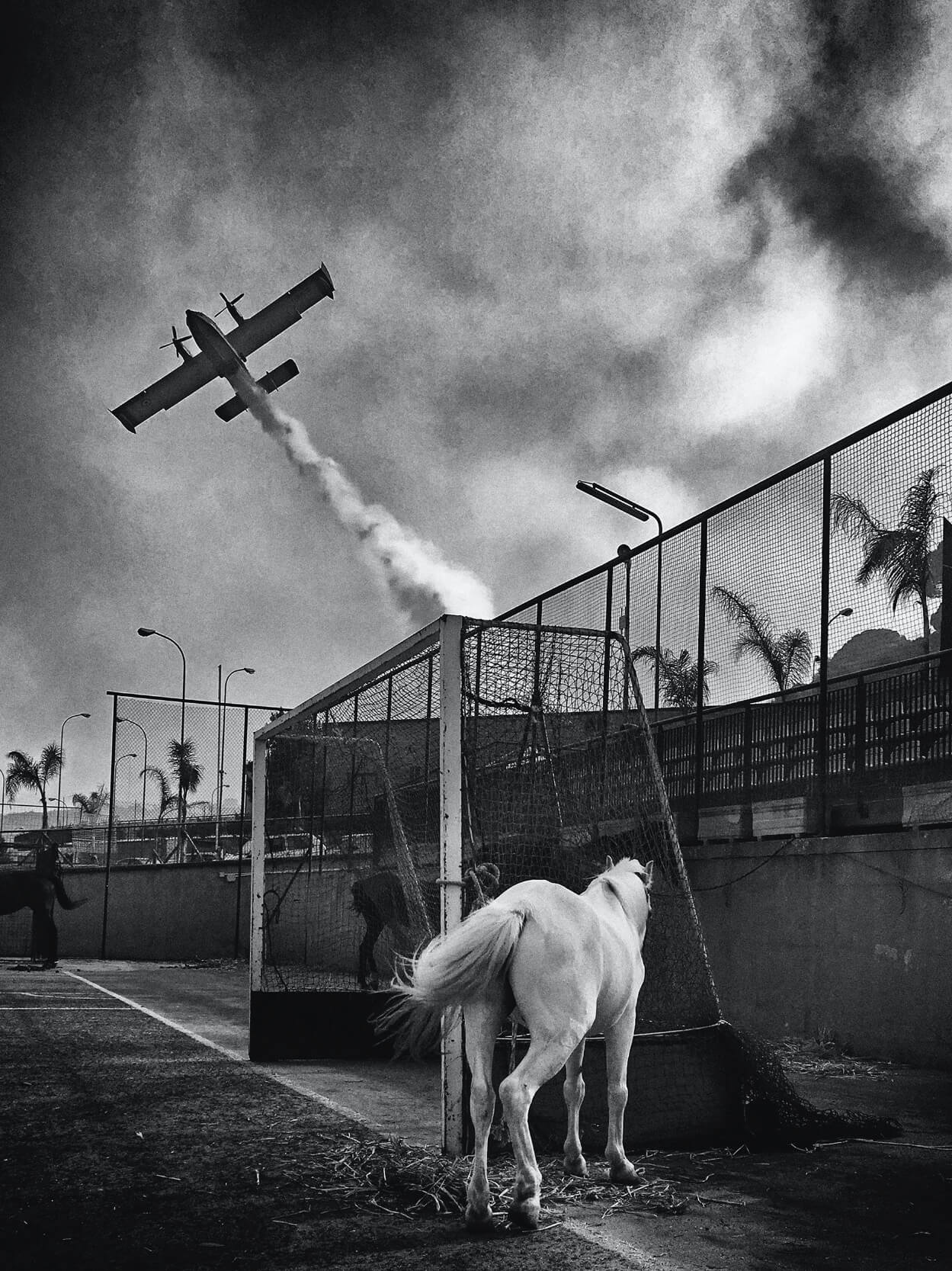
SIMONA BONANNO


“This is the second time Simona’s image has been recognized as a winner and deservedly so – using black and white to accentuate the dramatic tension of the scene, we see horses penned in for safety as a firefighting plane tackles a nearby fire from above. With a strong diagonal throughline to the frame, it is striking and visceral – a worthy document of a no doubt dramatic moment.” – LIFE FRAMER
Photographer statement – Horse & Canadair, Sicily, Italy 2017. Horse in a soccer field after being evacuated due to a huge fire.
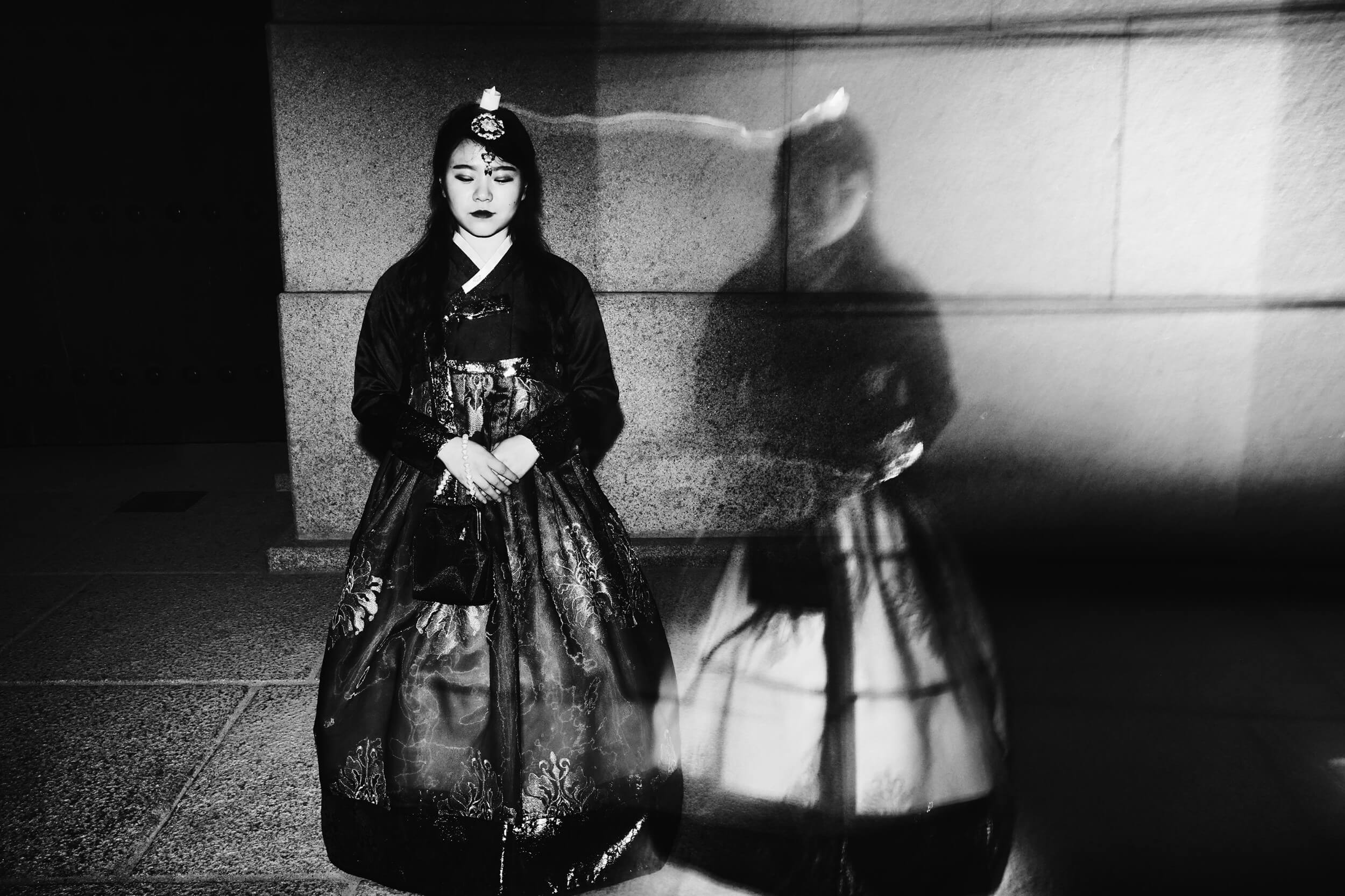
ARGUS PAUL ESTABROOK


“Using a bright flash to create a ghostly double exposure, there’s something haunting about this portrait – something unsettling in the dichotomy of stillness and motion, of the lovingly crafted outfit against the soulless concrete backdrop. Argus describes the setting as the “historic March 11th vigil in Seoul”, and while we’re uncertain from our research what that event specifically is, there is something apt in this depiction of it – of marking respects in silence, and of quietly connecting with a different realm.” – LIFE FRAMER
Photographer statement – Standing outside of Gwanghwamun Gate, a young woman wearing Hanbok attends the historic March 11th vigil in Seoul, South Korea.
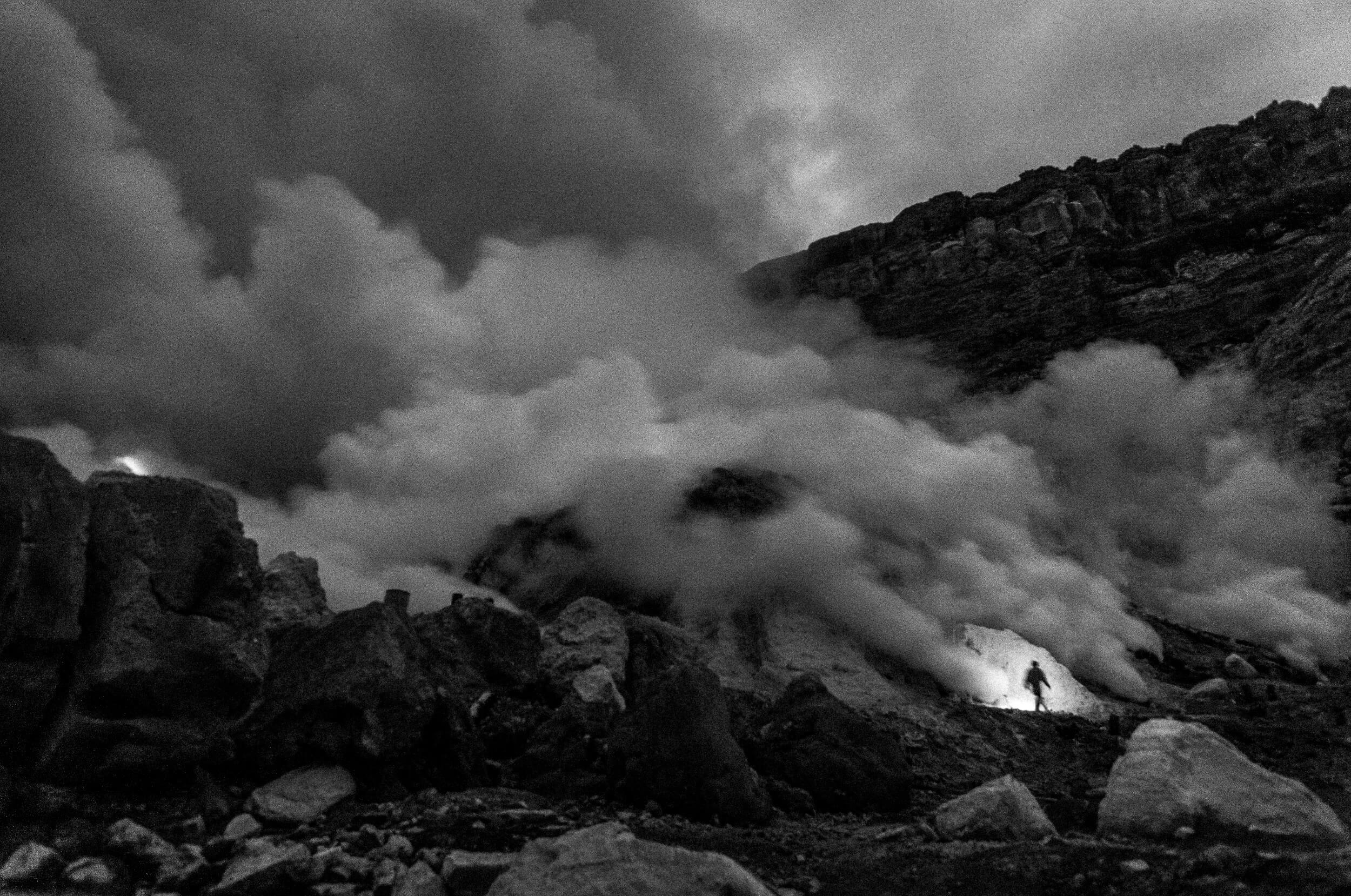
GONZALO BOTET


“Silhouetted in this harsh landscape, what might look like a staged set-up is in fact an Indonesian miner at the entrance to a mine, working to collect solid sulfur. So called “Devil’s gold” because of the price it wrecks on the health through the inhalation of noxious fumes, is a valuable commodity in a range of industries and so the mining continuous day after day around the clock. This grainy, dramatic image captures a sense of this bleak reality – of working in unforgiving conditions to make ends meet.” – LIFE FRAMER
Photographer statement – The Sulfur Volcano. In the bowels of the Ijen volcano, a miner fights against the smoke to collect the sulfur that allows him to survive.